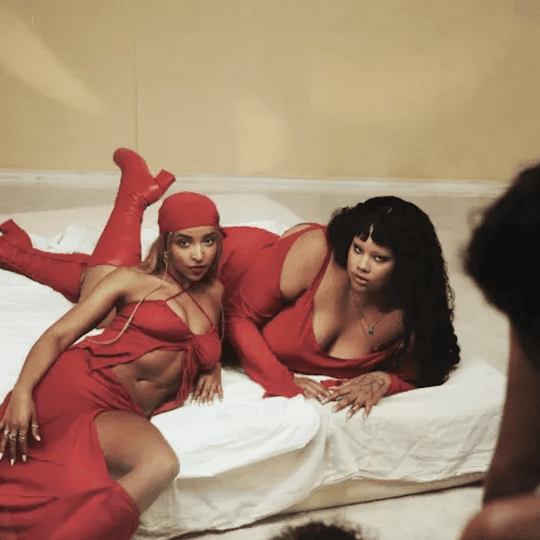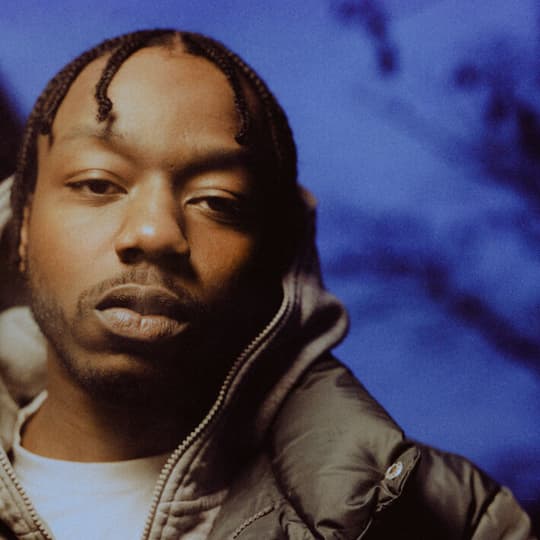
World's Best Music Journalists: Ben Cardew on why Dave Clarke never lost his hardcore
Dave Clarke was once famously described by DJ John Peel as “the baron of techno”, a nickname that has stuck with the British producer over the years thanks to his devotion to iron-clad techno beats and utter disinclination to compromise. And yet what made Dave Clarke’s early productions so notable were the influences that he took in from beyond techno, including hip hop, house, punk and - notably - hardcore.
Clarke’s first musical loves were punk and hip hop and his first DJ gigs involved spinning rap, soul and funk, including DJing for The Jungle Brothers in Brighton in the 1980s. His first excursions into production, however, were hardcore - quite literally, in fact, with his first release being under the pseudonym “Hardcore” for XL Records in 1990.
It’s worth clearing up what I mean by hardcore. It’s not, obviously, the US take on punk; nor do I mean what later became known as “hardcore”, the largely Northern European, fast and furious take on four to the floor beats that operated at upwards to 160BPM. No, I’m talking about what is sometimes called “breakbeat hardcore”, the breakbeat driven precursor to jungle that was popular at raves. Songs like The Ragga Twins’ Hooligan ’69, Lennie D’Ice’s We Are I.E or Carl Cox’s I Want You (Forever) that weren’t quite jungle, yet, but pointed the way towards it.
And that is what you get - sort of - on Clarke’s 1990 single for XL. I Like John, the A side in the UK, doesn’t actually have a break but its sample-laden production and brooding bass line suggests late rave, while Get A Little Stupid, which was found on the other side of the 12 inch, features a bona fide breakbeat, alongside driving drum machine, thrusting bass riff, LFO-ish bleeps and another host of samples.
The Hardcore moniker was not long lived and, after subsequent releases as Directional Force and Pig City, Clarke hit it big in 1994 with Red 1, a two-track techno monster that was released under his own name. “Finally, when I felt I had my own sound, when I felt I had ownership, and it wasn't just some weird, experimental, not-sure-who-the-fuck-I-am, then I felt like I could actually have my name on music,” Clarke explained to me when I interviewed him for Line Noise.
Red 1 - and the subsequent Red 2 and Red 3 12 inches that followed it in 1994 and 1995 - were not total outliers in the techno scene of the time. And yet they definitely had certain qualities that made them stand out and continue to mark a difference today.
One was the size. The six tracks on the three Red releases sounded utterly massive, from the towering bass drum and echoing clap of Protective Custody (side A of Red 1) to the elephantine leer on Wisdom To The Wise (side A of Red 2), an audio depth that propels the songs up, out and into space.
In a way Wisdom To The Wise is a precursor to Bad Company’s drum & bass monster The Nine, which I wrote about recently. Both songs feature very simple synth riffs, where the brief step up in tone at the end of the sequence feels positively Wagnerian, like a slap round the face or the revelation of a secret.
In both cases the melodies are so simple to barely qualify as such. But the force with which the changes are imparted is enough to make the hairs on the back of the neck jolt to attention. And, much like The Nine, Wisdom To The Wise has lost none of its impact over the years.
Clarke puts the strength of his production down to reading up on studio gear, as well as the work of acclaimed mastering engineer Nilesh Patel - aka Nilz - who collaborated with everyone from N.W.A to Daft Punk.
Clarke told me he would read music technology magazines like Sound on Sound - “but they always seem to manage to completely ignore electronic music unless it involved Kraftwerk or Jean-Michel Jarre or Vangelis or Tomita”. “I would be reading and trying to transpose the information of, well, ‘This compressor would be jolly good on a rock track and you know, you could do it, to do the drums and blah, blah, blah’. And I'd be like, ‘okay’,” he explained.
Nilz, he added, “would push what I already did even further”. “So that's how it just became louder,” Clarke said. “When you listen to it now, of course, it’s not. But at the time to get the bass drum to come through was quite tricky for a lot of people. And I just managed to stumble across, twiddling knobs to get the sound that I wanted without even knowing what I was really doing, with the compressor.”
Naturally, in the loudness-obsessed world of electronic music, people were keen to follow Clarke’s example. “I managed to get a signature sound, so much so that I'd be speaking to Thomas Bangalter from Daft Punk in the Rex Club [in Paris] and he would ask, ‘Well, how'd you get the sound?’,” Clarke told me. “And I would tell him and then they used it on loads of their records. And I would think, ‘Why did I tell people? I should just keep these things quiet.’”
He’s joking, I think. Certainly, I don’t get the impression that Clarke is annoyed by people copying his sounds and in particular his epic bass drums. “Everyone was nicking everything, so it's not really a big deal,” he said, mentioning UK techno label Primate and early Drumcode records as people that may have been inspired, shall we say, by his sound.
“But, you know, it's OK because we'd all be inspired by each other and it was always like a slightly different spin,” Clarke told me. “I mean, the stuff that's obvious is insulting, of course. But a large amount of the time it's like a different spin on everything. And that's OK.”
Bangalter would later return the favour by including Clarke on Daft Punk’s Teachers, one of a small number of British producers to make the group’s list of influences. You could also, perhaps, see his early Roulé releases - and especially Outrun and Ventura on the first Trax On Da Rocks - as tributes to Clarke’s Southside, a driving Chicago house tune released in 1995.
What other producers largely failed to grasp, however, was the other ingredient that made the Red series so special, notably the influence of hardcore. At times, the influence was more implicit. The sheer noise, rudeness and explosive life of the six tracks on Red 1-3 spoke to someone who was inspired by the chaotic, filthy joy of hardcore, as it broke over the UK’s clubs and raves, at a time when techno, hardcore and house would happily live together in DJs’ sets.
At other times, the inspiration from hardcore was more explicit. The reverse riff that runs through Protective Custody, for example, feels very hardcore in its char-black appeal, both hugely exciting and ever so slightly sick-making in its pit-of-the-stomach appeal, and you could easily imagine a breakbeat bursting over the tune from great heights.
Zeno Xero - side 2 of Red 1 - has an actual breakbeat running through it, its lopsided and vaguely Latin-tinged groove making it one of the stand-out tracks in Clarke’s catalogue. (It reminds me, oddly, of Plaid in its rhythmical trickery, albeit Plaid cast in Vantablack titanium and kicked down a couple of flights of stairs.) Gonk, side 2 of Red 2, has a similarly slippery rhythm, its mutated hi-hat (I think) patterns giving the suggestion of a breakbeat without actually using one, while the song has an acidic 303 melody that would fit right into an Altern-8 record.
Red 3’s Thunder and the Storm, meanwhile, owe more to Jeff Mills’ Waveform Transmissions album in their distorted drum machine attack than hardcore. But even then, Clarke adds in an exorbitant dose of (very hardcore) sub bass, while the panic attack synth riff that kicks its way to the front of Thunder sounds a bit like something on an old T99 record.
I mentioned my theory of hardcore’s influence to Clarke and he agreed enthusiastically. “Yeah, absolutely,” he said. “Because I grew up on hip hop, and breakbeats were a really important thing to me. And when you have these tracks that have breakbeats at 120 BPM, it is like, ‘Holy shit, this is brilliant.’”
“You know,” he added, “you hear these records on [UK hip hop and electronic label] Tam Tam Records, like Dynamic Duo, which had the strong f*cking beat, we'd hear like Ruth Joy, produced by Mantronix with really strong beats, and it didn't always have to be a drum machine. And coming from hip hop and electro, having that swing in there felt liberating.”
Clarke followed the Red series with his excellent debut album Archive One in 1995, a record John Peel named in his all-time top 20 - after which his momentum slowed somewhat, resulting in just two more studio albums to date, Devil’s Advocate in 2003 and The Desecration of Desire in 2017. The latter record, in particular, might surprise some fans of the Red series, with contributions from Mark Lanegan, Gazelle Twin and Mt. Sims.
And yet, in many ways, Dave Clarke never lost his hardcore. His music has remained uncompromising, fresh and always interesting, the hardcore swing ever present in his programming as a vanguard against business techno boredom. And that is why, 30 years on from the release of Red 1, Dave Clarke’s music will still leave you reeling in shock and quivering with delight.
Sign up to Ben Cardew's newsletter Line Noise - 'Dance music’s past, dance music’s future' on Substack here.
Read next: DMY Mix 007 | Carl Craig













